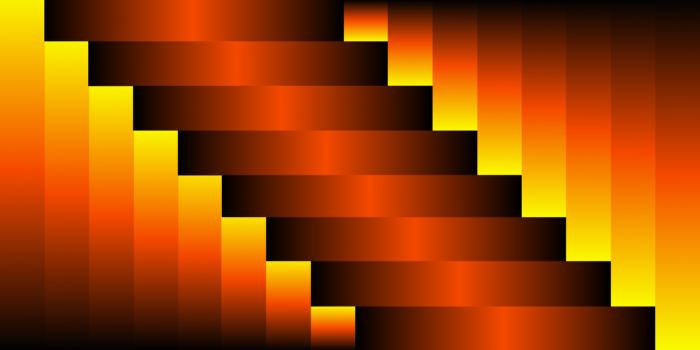As designers, we are often told to approach design projects with research first. This ideology carries through to performance creative and marketing. When determining what ads, emails, and landing pages will perform best, designers who do the due diligence of conducting competitive research are set up for more success. The key is utilizing competitive research to create more impactful designs backed by reason.
What does competitive research look like for creatives?
Competitor research can look different depending on the goal of the analysis and who is conducting it. The most common types of competitive analysis include website, product, paid media analysis and market research. For the purpose of creative teams, particularly in growth marketing, competitive research will be most valuable when evaluating the following from a creative point of view:
- Paid social creatives
- Email design
- Website design
To kick off the design process, creative members should first research into competitors to see what types of content, ads, and overall design mark their competitors are making. It creates a starting point for what types of creative tests would be worth running in a campaign. This established a baseline on what industry standards look like and why certain creatives may have performed better than others.
While looking through competitors’ creative footprint, designers should start asking questions like:
- What creative elements are grabbing the user’s attention?
- What creative copy, ad post copy, CTAs are working?
- Is there use of motion?
- Is there a successful template or layout?
- How cohesive is the conversion journey from the ad, to email, and/or landing page?
By conducting competitive research, designers are going beyond the surface level and tapping into the strategy behind one’s design decisions. It lets design teams hypothesize and evaluate what has worked or hasn’t worked for competitors. This will ultimately better inform a designer’s creative decisions for any campaign.
Best Competitor Analysis Tools for Creatives
There are several competitive research tools out there for creative teams to use. Here are some essential ones to get creative teams started with competitor research.
Paid social creative analysis
A tool that has become essential is Facebook Ad Library. Launched in 2019 to provide more transparency around ads, this is a free easy-to-use tool that allows you to look up any company to see what ads they have been running. This provides inspiration not only for creative storytelling but also for ad post copy. By looking at competitor ads, designers can start identifying trends, creative formats, and messaging that are popular among competitor brands. This creates a strong starting point for your next ad creatives.
It also sets the bar for what has already been created, and how you can create something different. Although the tool doesn’t let you see the performance of each of the ads, if you regularly check in on brands and see what creatives are still running, that can be an indication that the ad or style of the ad has been performing for that brand.
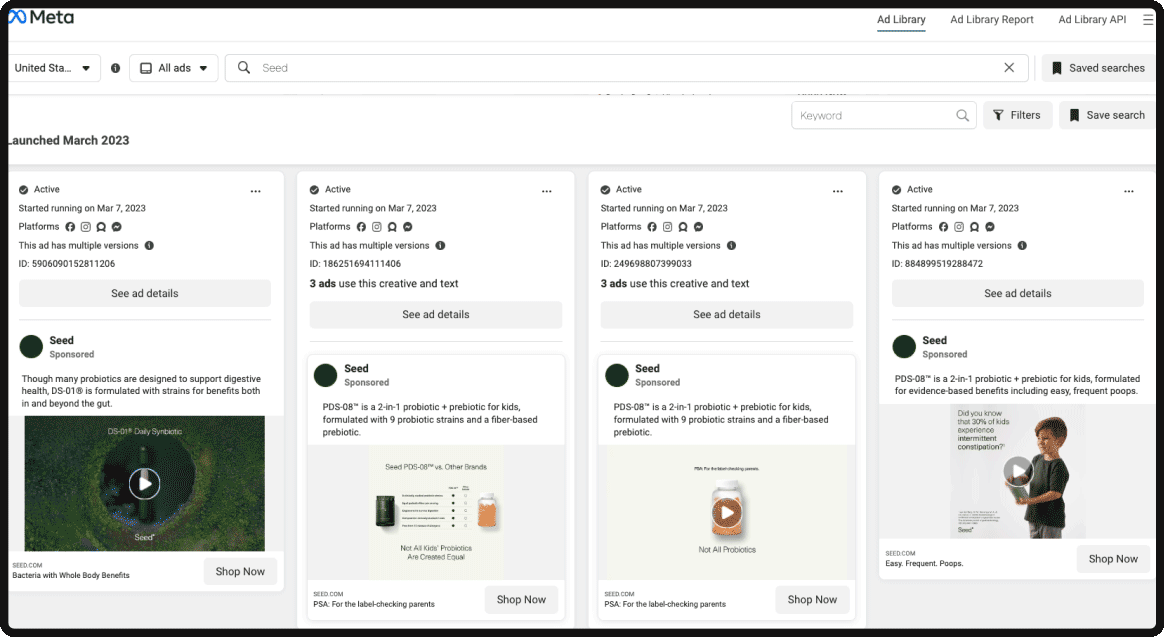
With the rise of UGC content that captures audiences in a new way, TikTok Ads Library, also known as “Top Ads” allows platform users to discover the best-performing ads within different industries, regions, and objectives. You can search by company name and TikTok shows the most relevant videos that populate with that search term.
What’s great about TikTok’s ad library is that when you click into an asset, you can see the breakdown of key metrics like CTR, CVR, and conversion. You can see where users click through on the video and where they drop off. Design teams can use inspiration for video-based assets to develop other designed ad variations with similar concepts, knowing which ones performed well on TikTok. All this knowledge can be carried into concepts for future creative campaigns for your client.
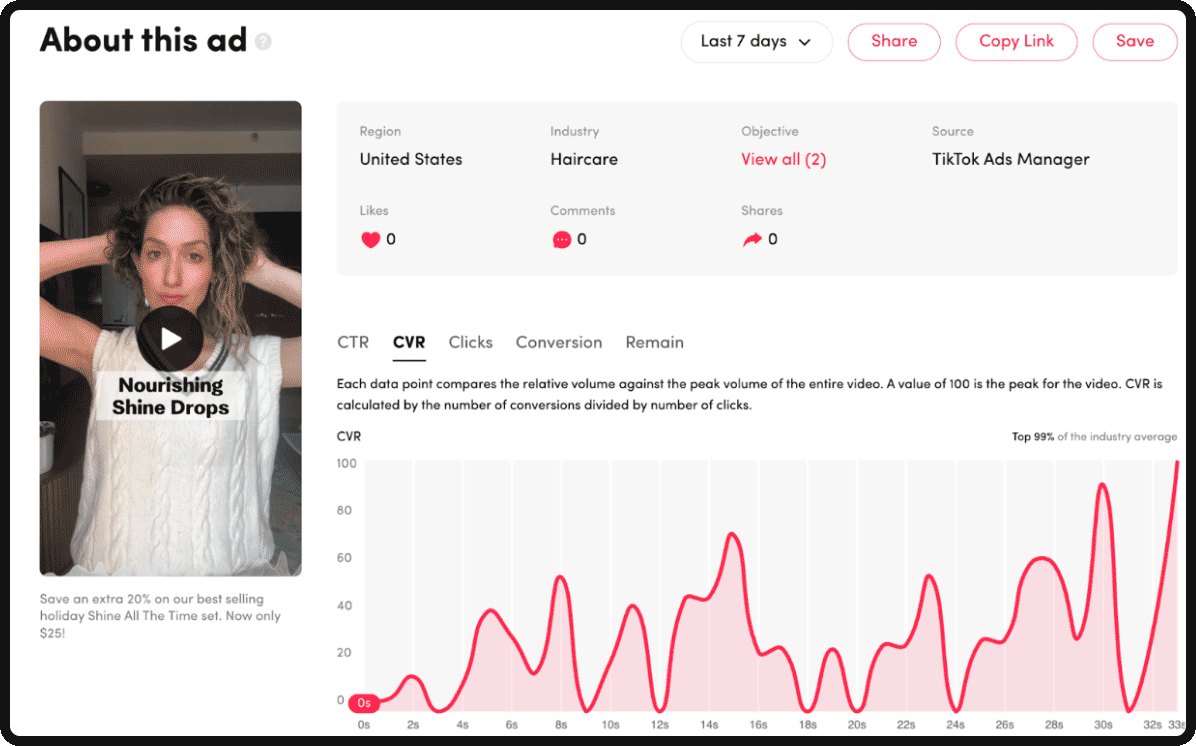
Another tool for competitor creative research is Moat which is a quick search engine for display ads. When you hover over the assets you can see when the ad was last active. Again this helps provide color into the types of messaging tests, CTAs, and formats that competitor brands may be running currently or have run in the past. It gives you a leg up in deciding what tests make sense for your brand.
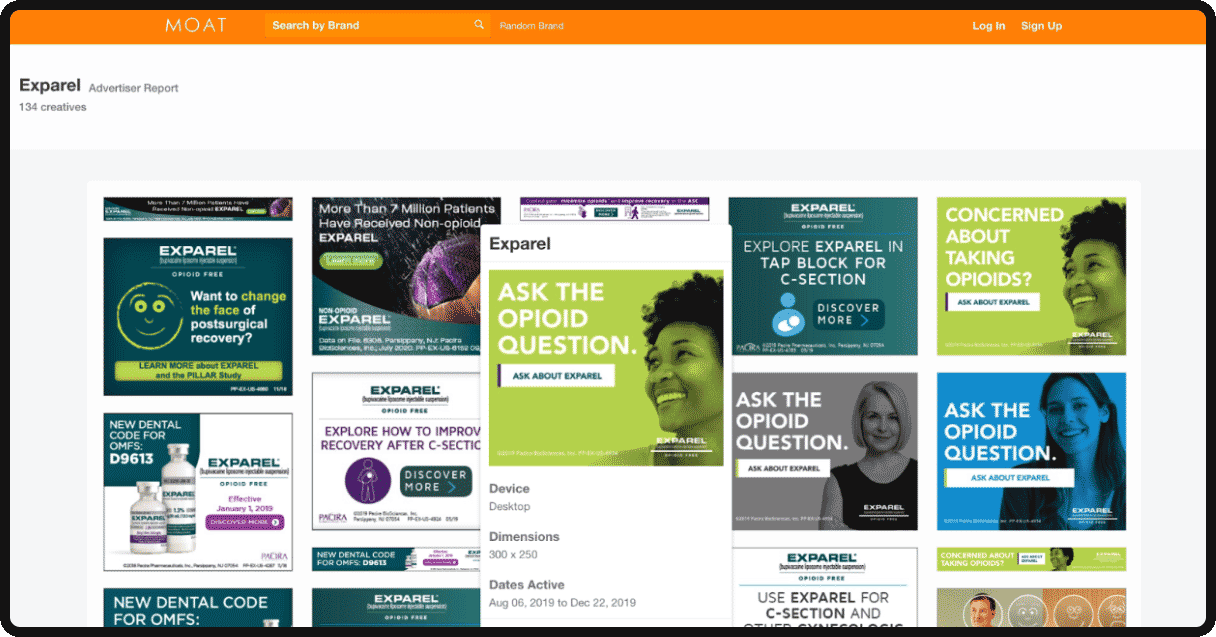
Email creative analysis
Competitor research doesn’t stop at ads. Competitor research should be looked at through a holistic multi-channel approach. Emails are another great way to learn more about a brand, their messaging, and creative footprint. Really Good Emails allows you to search emails by categories / industries. Although you might not always find a specific brand, it does give you a quick overview of emails in that particular industry and what an industry standard looks like from a design perspective. Similarly, Milled is another email research resource that allows you to look up companies and keywords. Although not every brand’s email repository is in the system, you can still find companies in similar industries and get baseline insight into the types of email campaigns being run.
The bootstrapping version is to simply visit competitors’ sites and sign up for their emails. This allows you to create your own analysis of competitors’ welcome flow, email frequency, and content. It also provides insight into overall design and messaging for your particular client, and ideas for campaigns that could tie back to ads and other channels.
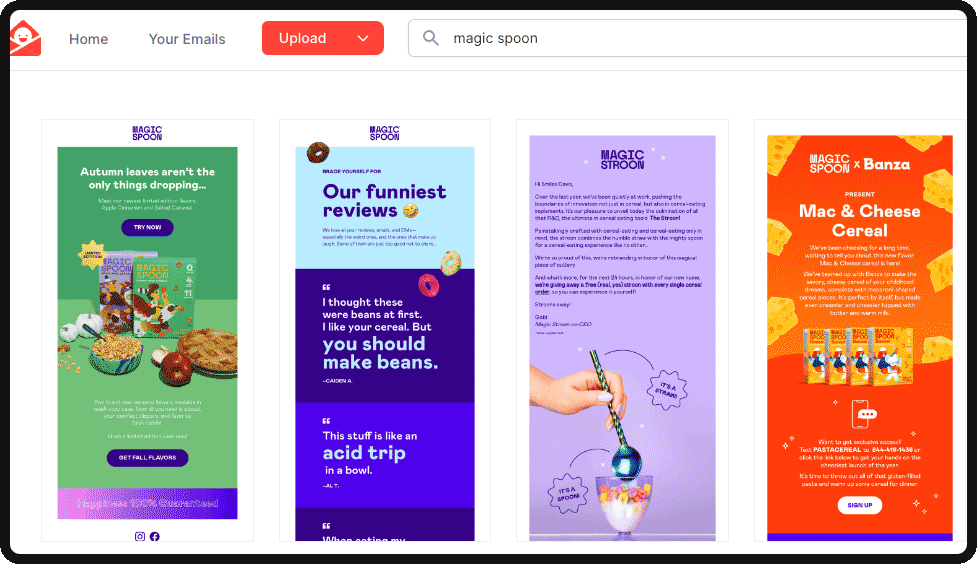
Website creative analysis
Conducting website analysis from a creative perspective is another key tool for creative teams.
Whether you create ads or emails, users are directed to landing pages. It’s important to ensure that a brand’s site is up to industry standards and identify areas of opportunity to optimize a site for messaging, design, layout, CRO, and user experience. What does the user journey look like? Are there clear action steps and information on the page?
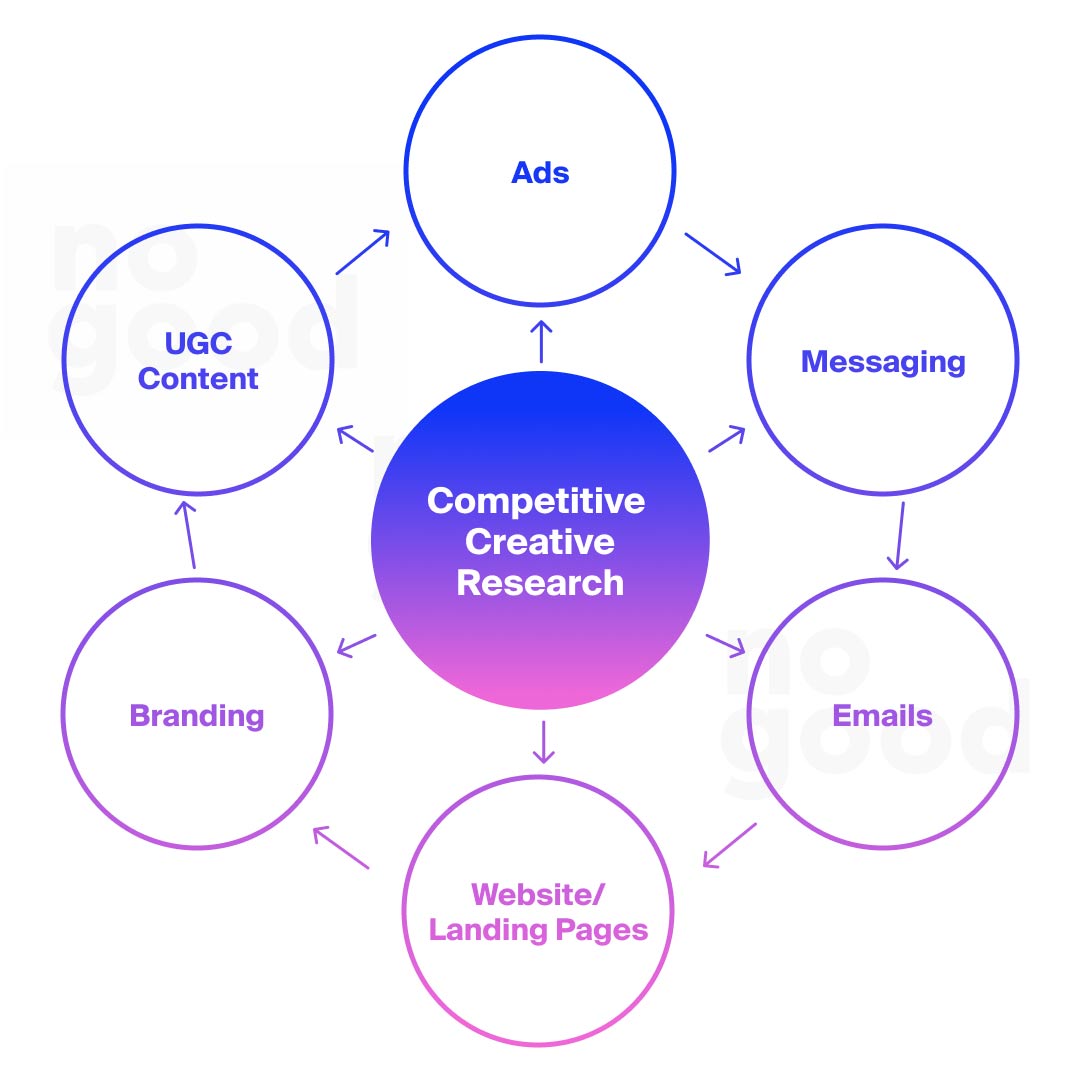
All of this information can help you identify what optimizations need to be made on your brand or client’s site. It also sparks ideas for what landing pages might be worth creating and testing. It also allows you to identify competitor value propositions and messaging, to ensure that your brand will stand out.
Competitive Research In Practice
With the range of tools available today to conduct competitive research, it is important to remember to step back and look at the analysis from a creative strategy lens.
The research done creates a strong hypothesis and starting point for experiments to run. Creative teams should build upon that research and decide what experiments and iterations are worth testing. Creative teams can then add their unique design knowledge and eye to create truly valuable creatives.





